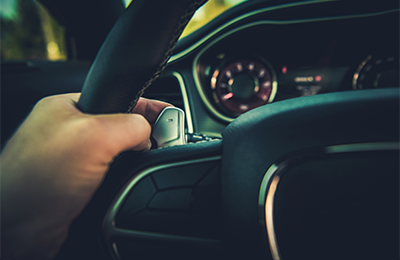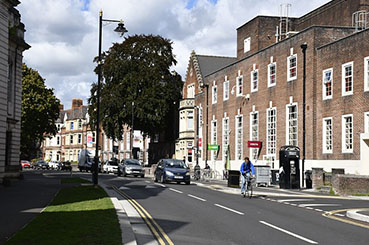Are you torn between the control of a manual transmission and the convenience of an automatic? Semi-automatic cars offer the perfect solution! They combine the best of both worlds, providing a driving experience that’s both engaging and effortless.
In this blog post, we’ll delve into the intricacies of semi-automatic transmissions, exploring how they work, their advantages and disadvantages, and whether they’re the right choice for you. So, if you’re curious about this unique type of transmission, keep reading!
What is a Semi-Automatic Car?
A semi-automatic car is a combination of a manual and automatic gearbox. It also has no clutch pedal, as is the case with the automatic.
Because of this, it’s really easy to drive a semi-auto and you can also choose how to control the gears since there’s a selection of both manual and automatic options.

Semi-automatic cars offer a unique driving experience that combines the convenience of automatic transmissions with the control of manual gearboxes. Unlike fully automatic cars, which handle all gear changes without driver input, semi-automatic cars allow the driver to select the desired gear using a lever or buttons. This provides a greater sense of involvement and control over the driving experience.
Once the desired gear is selected, the car’s computer automatically handles the clutch and gear changes. This means that the driver does not need to depress the clutch pedal or manipulate the shifter to change gears. However, unlike fully automatic cars, the driver still has the ability to choose when to shift gears, allowing for a more personalised driving style.
Semi-automatic cars are often equipped with features like paddle shifters mounted on the steering wheel, which provide a more direct and sporty way to change gears. These paddle shifters allow the driver to shift up or down through the gears with a simple flick of their fingers.
In addition to the convenience and control that semi-automatic cars offer, they also tend to be more fuel-efficient than fully automatic cars. This is because the driver has the ability to select the appropriate gear for different driving conditions, which can help to optimise fuel consumption.
Can you drive a semi-auto car on an automatic license?
According to DVLA, you can drive a semi-auto car on an automatic license, as long as it has no clutch pedal.
While semi-automatic cars do handle some of the gear changes automatically, they still require the driver to select the desired gear using a lever or buttons. This is a skill that is not covered in the training for an automatic license.
If you have an automatic license and want to drive a semi-automatic car, you will need to take additional driving lessons and pass a driving test that covers the operation of semi-automatic transmissions. This is because semi-automatic cars require a different level of skill and knowledge than fully automatic cars.
How To Drive A Semi-Automatic Car
1. Start the Car:
Follow the usual procedure to start the car, ensuring the parking brake is engaged.
The gear selector will likely be in a neutral position.

2. Engage the Gear:
Move the gear selector to the desired gear. This could be done with a lever or buttons, depending on the car’s design.
Semi-automatic gearboxes typically offer multiple gear modes, often controlled by a gearstick or a dial. These modes include Park (P), Reverse (R), Neutral (N), and Drive (D). P locks the transmission, R engages reverse, N allows the vehicle to coast, and D allows the car to move forward or backwards based on the accelerator and brake pedals.
Remember: Unlike a fully automatic car, you need to select the gear before you start moving.
3. Release the Parking Brake:
Once you’ve selected the gear, release the parking brake. The car will begin to move forward or backward, depending on the selected gear.
4. Accelerate and Brake:
Use the accelerator pedal to increase speed and the brake pedal to slow down or stop.
The car’s computer will handle the clutch and gear changes, so you don’t need to worry about depressing the clutch.
5. Shift Gears:
When you want to change gears, simply move the gear selector to the desired gear.
For example, to upshift from 2nd to 3rd gear, move the selector to 3rd.
The car’s computer will handle the gear change automatically.
6. Downshifting:
To downshift, move the gear selector to the desired lower gear.
For example, to downshift from 4th to 3rd gear, move the selector to 3rd.
The car’s computer will handle the downshift, but you may need to match the engine speed to the vehicle speed to avoid jerking.
7. Parking:
When you’re ready to park, select the neutral gear or reverse, as appropriate.
Engage the parking brake and turn off the engine.
Additional Tips:
- Paddle Shifters: Many semi-automatic cars have paddle shifters mounted on the steering wheel. These can be used to shift up or down through the gears more quickly.
- Manual Mode: Some semi-automatic cars have a manual mode that allows you to control the gear changes more directly. In this mode, you may need to press a button or lever to initiate the gear change.
- Practice: The best way to learn how to drive a semi-automatic car is to practice. The more you drive, the more comfortable you’ll become with the controls and the shifting process.

By following these steps and practising regularly, you can master the art of driving a semi-automatic car.
What’s the difference between an Auto and Semi-auto Transmission?
A fully automatic car doesn’t have the option to select gears manually as opposed to a semi-auto. Meanwhile, with a semi-automatic, you can select gears just like with a manual, but with the difference of using a clutch pedal which is switched on electronically. Also, a semi-auto is typically more fuel-efficient than an automatic car.
Pros and Cons of a Semi-automatic Transmission
Pros:
Combination of Manual and Automatic: Offers the control of a manual transmission with the convenience of an automatic.
Improved Fuel Efficiency: Can be more fuel-efficient than fully automatic transmissions due to the ability to select the optimal gear.
Enhanced Driving Experience: Provides a more engaging driving experience compared to fully automatic transmissions.
No Clutch Pedal: Eliminates the need to depress the clutch pedal, reducing leg fatigue.
Paddle Shifters: Many semi-automatic cars offer paddle shifters for a more sporty and direct shifting experience.
Cons:
Higher Cost: Semi-automatic transmissions can be more expensive than fully automatic transmissions.
Limited Availability: Not as widely available as fully automatic transmissions, especially in older or less common car models.
More Complex to Learn: May require more practice to master compared to fully automatic transmissions.
Potential for Gear Slippage: In some cases, the computer controlling the gear changes may experience delays or slippage, leading to a less smooth driving experience.
Limited Gear Selection: While semi-automatic transmissions offer more control than fully automatic transmissions, they may still have limitations in terms of gear selection compared to fully manual transmissions.
Should I buy a semi-automatic car?
Absolutely, consider buying a semi-automatic car! They offer a fantastic blend of control and convenience, making them a great choice for drivers who appreciate the engagement of a manual transmission but want to avoid the constant shifting.
With their advanced technology and intuitive controls, semi-automatic cars provide a smooth and enjoyable driving experience. Whether you’re a seasoned driver or a new learner, a semi-automatic car can offer a rewarding and satisfying driving journey.
Good luck with your car search!




